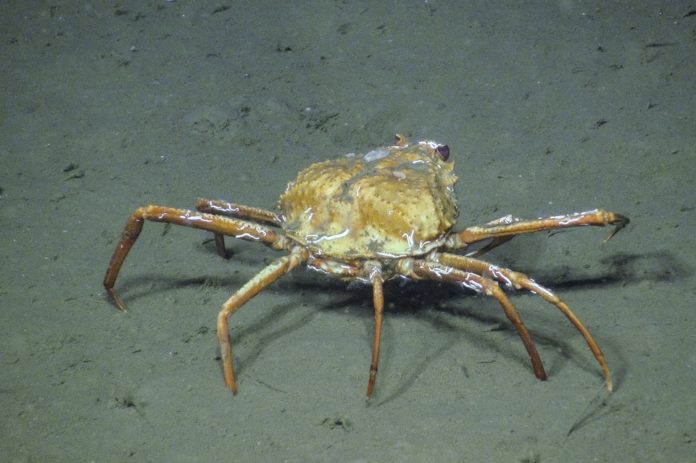A recent study conducted by researchers at the University of Victoria and Oregon State University has found fascinating new behaviour exhibited by tanner crabs off the coast of British Columbia.
The commercially-harvested species of crab has been observed feasting at a bubbling methane seep on the deep seafloor in the northeast Pacific Ocean.
Based on previous observations, tanner crabs (or Snow crabs) used to exclusively feed on phytoplankton which, ocean models predict, may become more and more rare due to rising temperatures.
So instead, these crabs have turned to snacking on methane-filled bacteria, around 1.2 kilometres in the ocean off the coast of BC.
“Evidence shows the crabs’ diet is diverse and includes bacteria that processes methane,” says Fabio De Leo, co-author of the study and senior scientist at UVic’s ONC.
“This suggests that their populations may be able to adapt if their common food source becomes scarce. By studying and collecting these specimens, we can learn how a variety of sea-dwelling species are adapting to ongoing changes linked to climate change.”
Consuming chemosynthetic energy
Methane seeps are located along continental margins where hydrocarbon-rich fluid seeps up from the ocean floor, often in the form of methane.
These seeps have been found to support species like clams and mussels which rely on the chemosynthetic energy provided by seep bacteria.
Researchers who observed the tanner crabs at ONC’s seafloor observatory collected specimens, and found important biochemical markers in the crabs’ muscle, stomach tissues and contents.
Findings also suggest that the crabs are migrating and may be dispersing the food energy from the seeps to other seafloor-dwelling species.
“Through collaborative research in Canada and beyond, this study further confirms how deep-sea ecosystems provide important ‘ecosystem services’ to humans, in this case in the form of crab fisheries stocks,” adds De Leo.
The study of tanner crabs began in 2012 when experts observed clusters of them in Clayoquot Slope, the methane seep off the BC coast.



